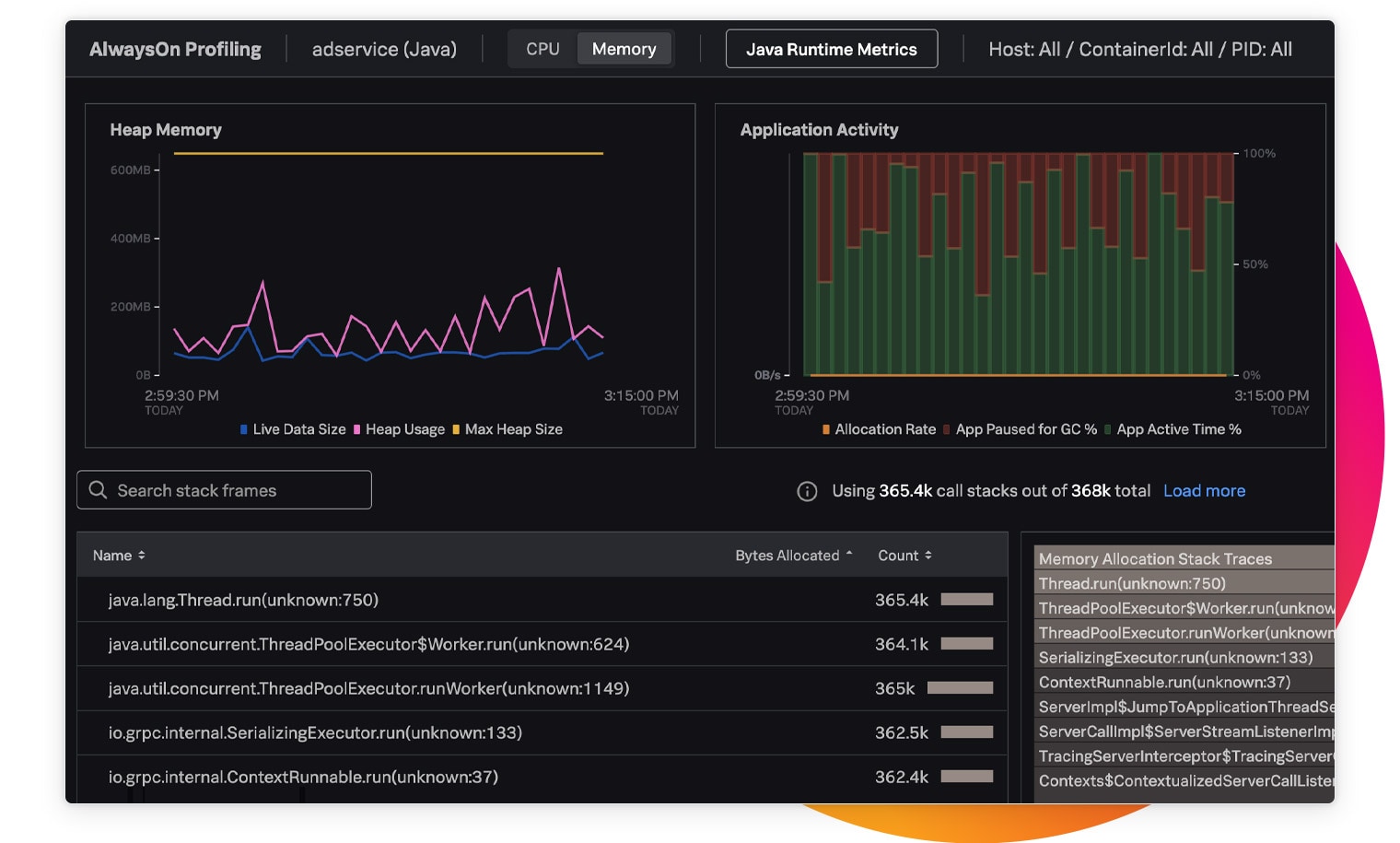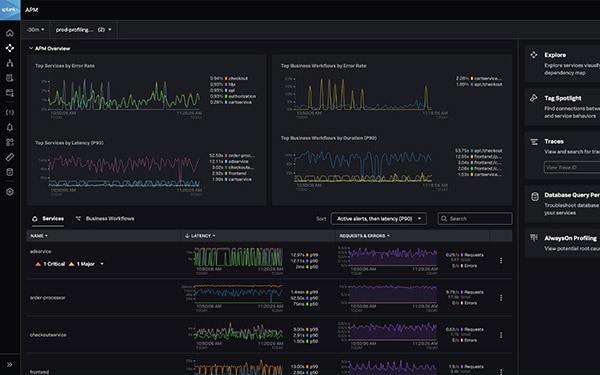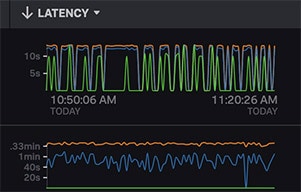Solve problems faster in monoliths and microservices by immediately detecting problems from new changes, confidently troubleshooting the source of an issue and optimizing service performance.
The Solution
Super-human context for your system
End-to-end visibility, in real time
View an entire production environment in real time, from cloud infrastructure, monoliths and microservices — and across web and mobile.
Find the “why” faster in microservices
AI helps to troubleshoot quicker, pointing you to the issues that impact customers and services the most.
Identify the line of code responsible
Understand how your code impacts memory and resources. Splunk links code to every trace from every service, with minimal overhead.
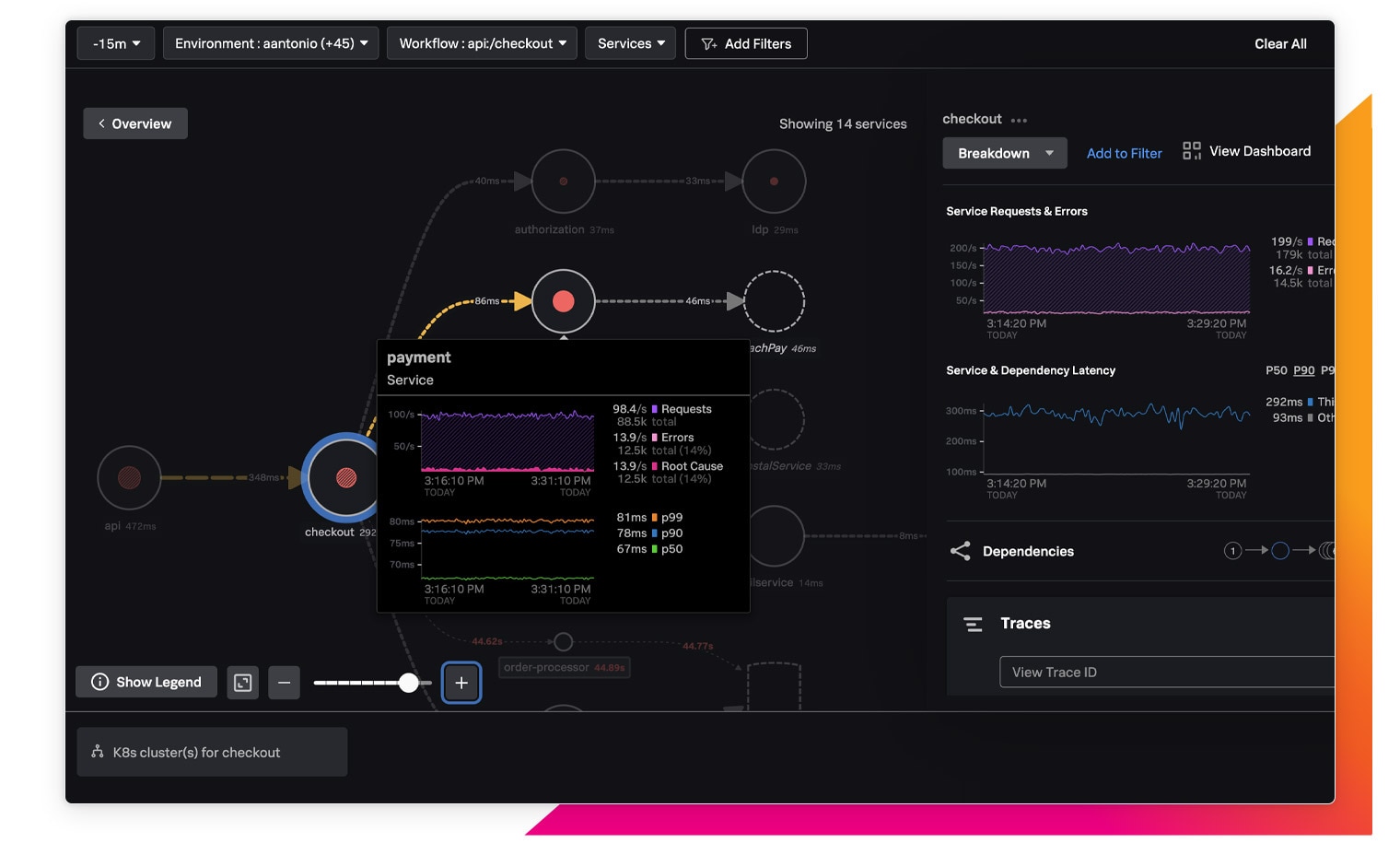
Troubleshoot faster
Easily investigate any transaction, from your web and mobile experience to backend services. Troubleshoot at every step without having to reproduce the issue, and understand which problems to fix first.
Splunk Observability helps us see clearly into our complex environment, allowing us to act based on data so we can deliver on our mission to help customers build better products, faster.
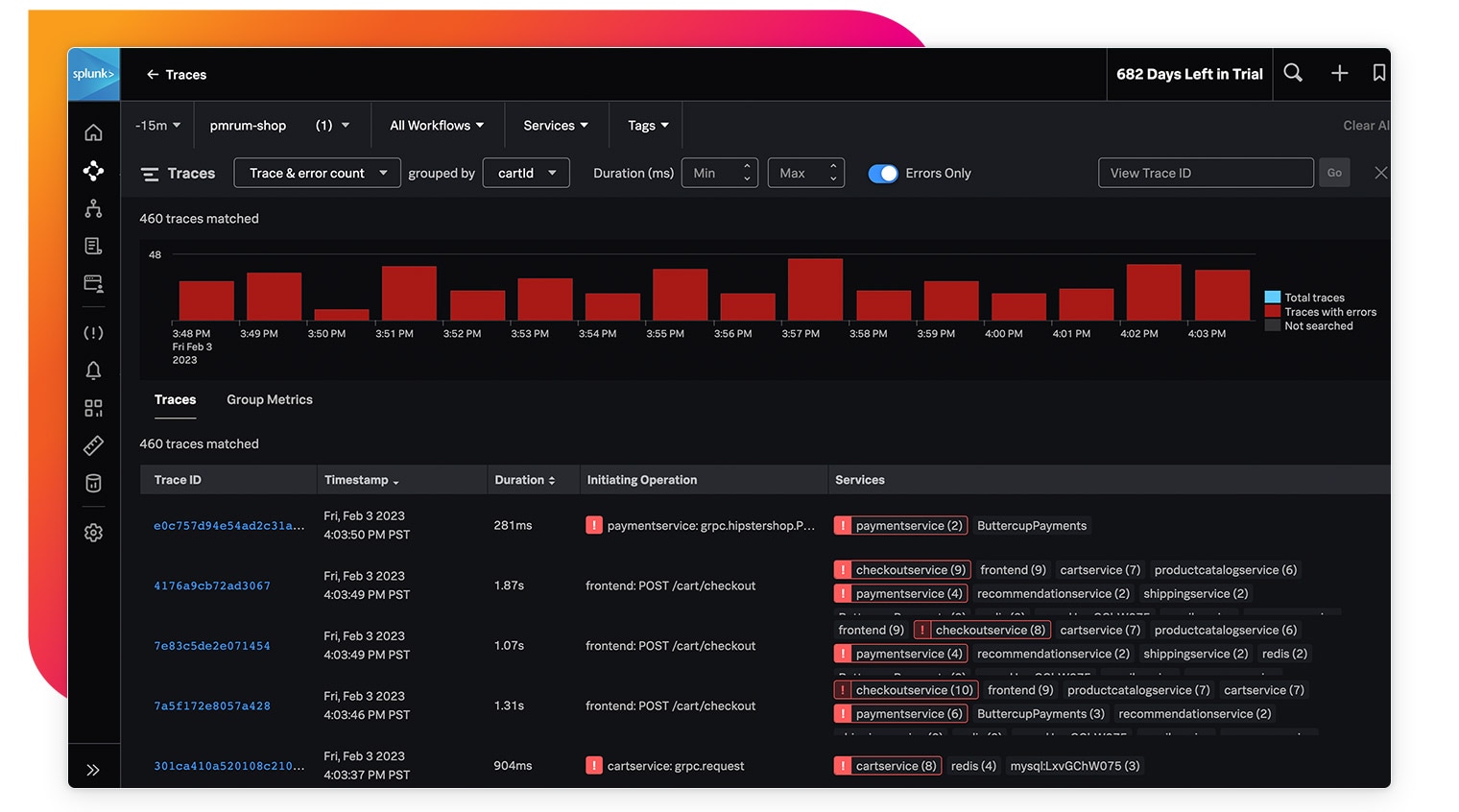
Rely on intelligent tagging and analysis
View all tags from your business, infrastructure and applications in one place to easily compare new trends in latency or errors to critical service components.
Splunk Observability gave Rappi the ability to prioritize putting the fire out by focusing on the right alerts. Since technology-related alerts, business-related alerts, operations-related etc. alerts all live in Splunk Observability, we are able to really pinpoint where the problem is and to concentrate on fixing it faster.
AI to isolate problems faster
Instead of manually digging through individual dashboards, isolate problems more efficiently with AI-directed troubleshooting that automatically identifies the sources of latency and errors impacting your services and customers the most.
Splunk captures all the logs, metrics and traces in a way that allows us to understand any event across our platform, so we can ask questions and get answers.
